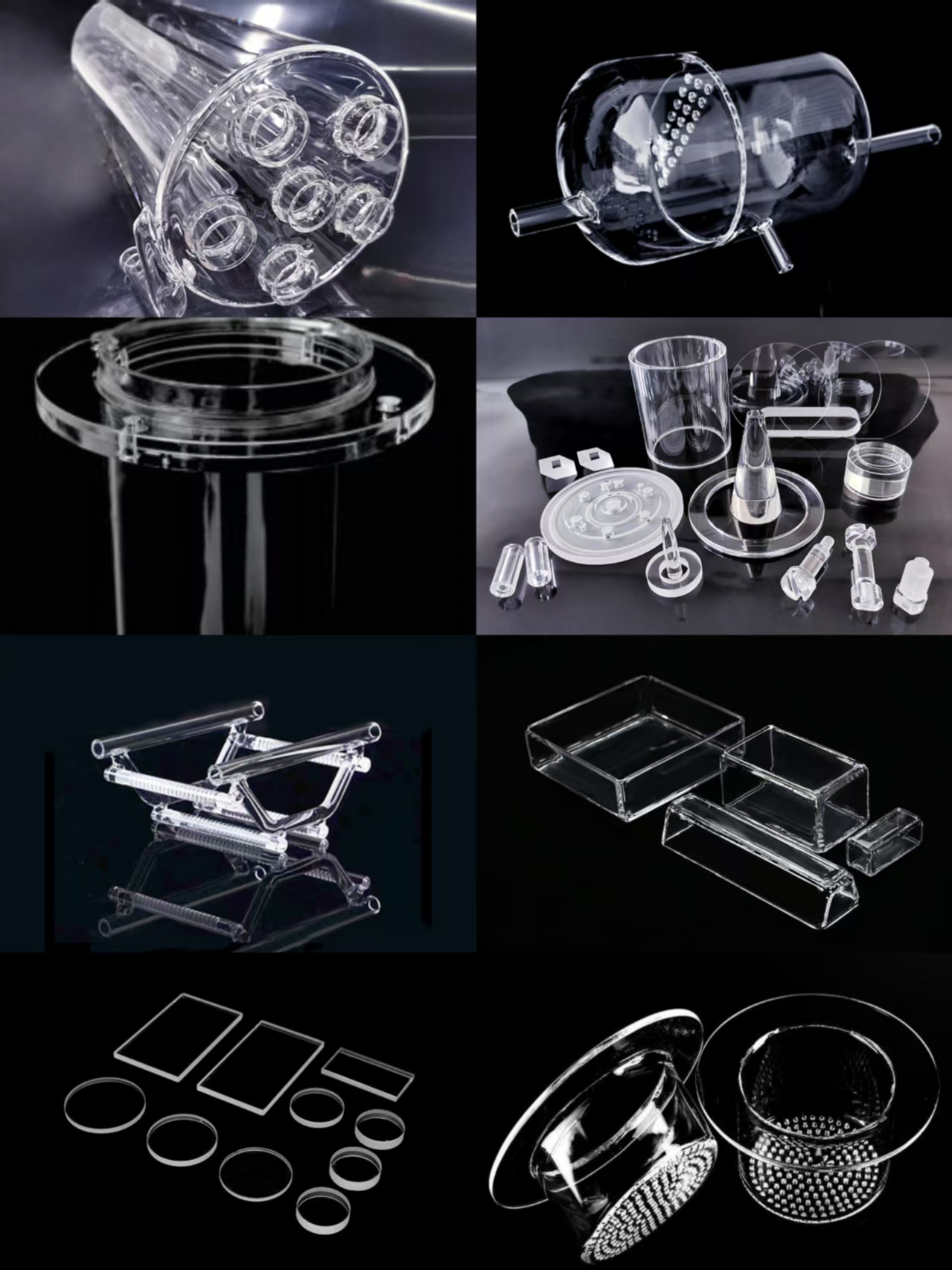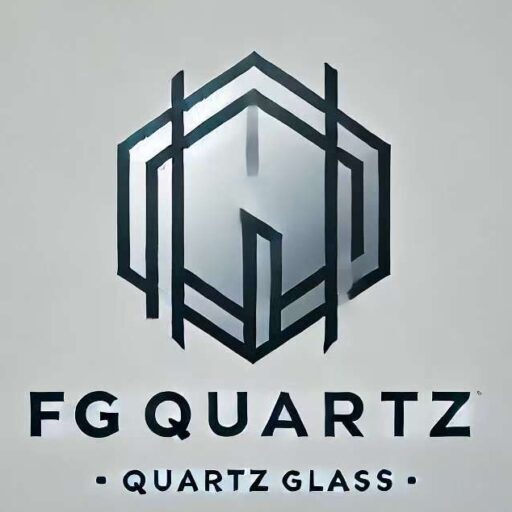Quartz Glass vs Ordinary Glass
The microstructure of quartz glass is made up of a network of amorphous silica (SiO₂), while ordinary glass (e.g., soda-lime glass) contains a large number of other oxides (e.g., Na₂O, CaO). The specific differences are as follows:
Chemical Composition:
Quartz glass: SiO₂ purity≥99.95% (semiconductor grade up to 99.9999%)
Ordinary glass: SiO₂ content is about 70-75%, containing 12-15% Na₂O, 10-15% CaO and other impurities
Atomic arrangement:
Quartz glass: disordered three-dimensional network structure, Si-O bond length 1.61Å, bond angle 109.5° (similar to crystal structure but no long-range ordering)
Ordinary glass: The network structure is interrupted by Na⁺, Ca²⁺ plasma, forming a more open structure
Performance Differences:
Coefficient of Thermal Expansion: Quartz Glass (0.55×10⁻⁶/K) vs Ordinary Glass (9×10⁻⁶/K)
Softening point: quartz glass (1683°C) vs ordinary glass (600-800°C)
UV transmittance: quartz glass (>90% @200nm) vs ordinary glass (almost impermeable to < 300nm ultraviolet rays)
If you need professional quartz solutions, please feel free to contact us. FG Quartz is committed to providing you with high-quality, reliable quartz products and services to help your business grow.
📧 Email: fgquartz@outlook.com
🌐 Website: www.fgquartz.com




